The Fred G. Dale Planetarium houses the most technologically advanced and educationally versatile planetarium in the state of Nebraska with a Spitz SciDome high-definition projection system that puts 3 million pixels on the 30-foot dome, can show 500 million stars, can look at space from any location in the Solar System, can move backward and forward through time 100,000 years, and much more! Our fulldome shows take advantage of this technology by creating a fully immersive experience where you can learn about the stars, the planets, the Moon, and even the Sistine Chapel!
Animals of the Sky

A young girl, Delphina, finds herself in an unfortunate incident and gets helps from the unexpected Animals of the Sky. Come experience her story and discover how the stars can be connected to create real life animals!
Target audience: Ages 3 to 8
Astronaut

What does it take to become an astronaut? "Astronaut," the latest immersive planetarium show take you from Earth into space...and beyond. Experience a rocket launch from inside the body of an astronaut. Explore the amazing worlds of inner and outer space, from floating around the International Space Station to maneuvering through microscopic regions of the human body. Discover the perils that lurk in space as we subject Chad, our test astronaut, to everything that space has to throw at him. "Astronaut" is an experience like nothing on Earth.
Back to the Moon for Good
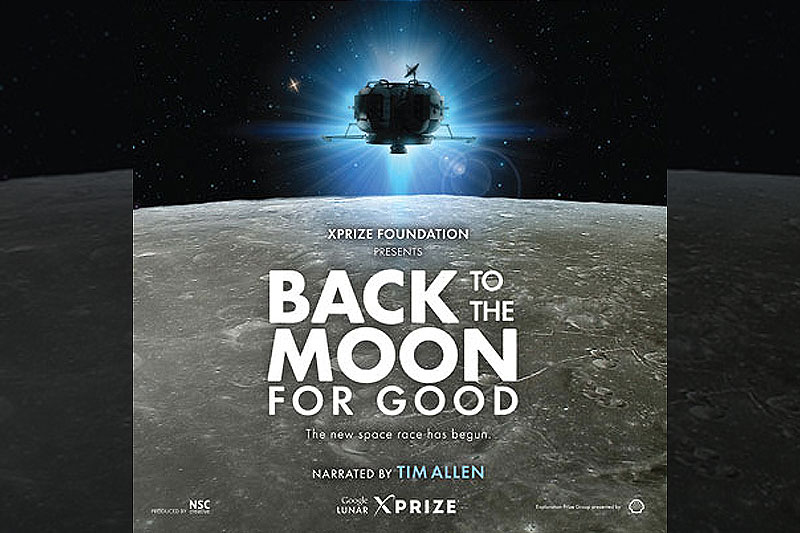
Immerse yourself in a race to return to the Moon 40 years after the historic Apollo landings. See how a competition among privately funded international teams is ushering in a new era of lunar exploration. Learn about the Moon’s resources and discover what humanity’s future on the Moon might hold. Narrated by Tim Allen, Back To The Moon For Good presents the Google Lunar XPRIZE, and the personal stories of competition and collaboration it inspires.
Target audience: Ages 5 to adult
Chasing the Ghost Particle

Deep in the ice at the heart of Antarctica, IceCube, the biggest and strangest detector in the world waits for mysterious messengers from the cosmos. Scientists are using tiny and elusive particles called neutrinos to explore the most extreme places in the universe. These ghostly neutrinos give us an exclusive way to study powerful cosmic engines like exploding stars and black holes.
In this 30-minute show, stunning simulations of the most energetic places in our universe, and the galaxies around us, are the prelude to a thrilling journey inside IceCube, looking for traces of neutrino collisions in the ice. From one of the most remote locations on Earth to the unexplored regions of the cosmos, "Chasing the Ghost Particle: From the South Pole to the Edge of the Universe" will take you on a journey you won’t forget.
Target audience: Ages 6 to adult
Compass, Calendar, and Clock

As our ancients learned, the sky is not just a thing of beauty; it's the ruler for the position of our planet. Understanding how our planet is aligned with the distance stars allows anyone to use the sky as a compass, a calendar and a clock. Come learn how to use the sky yourself!
Target audience: Ages 12 to adult
Cosmic Castaways
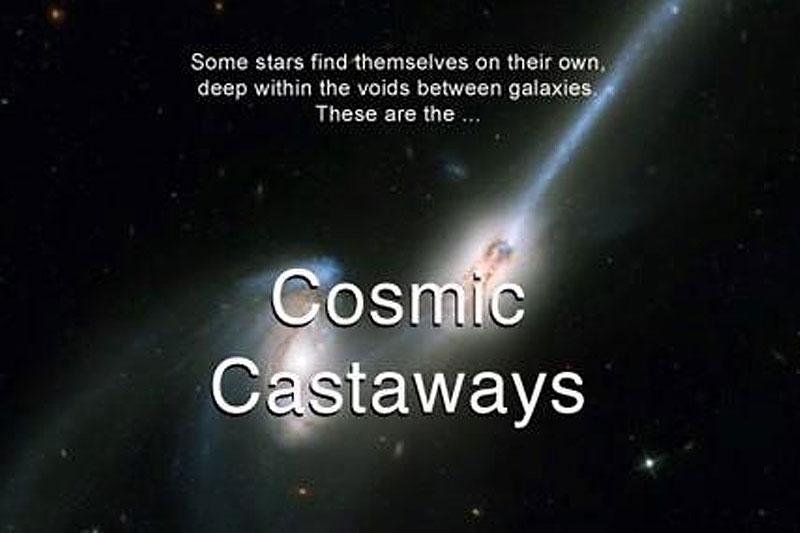
There are places where the night sky has no constellations. No Orion, no Big Dipper, nothing but a few lonely, far away stars and a few faint, ghostly patches of light. Most stars lie within the crowded boundaries of galaxies, travelling with their brothers and sisters in a vast galactic family. But some find themselves on their own, deep within voids between the galaxies. These are the cosmic castaways.
Target audience: Ages 6 to adult
Cosmic Colors
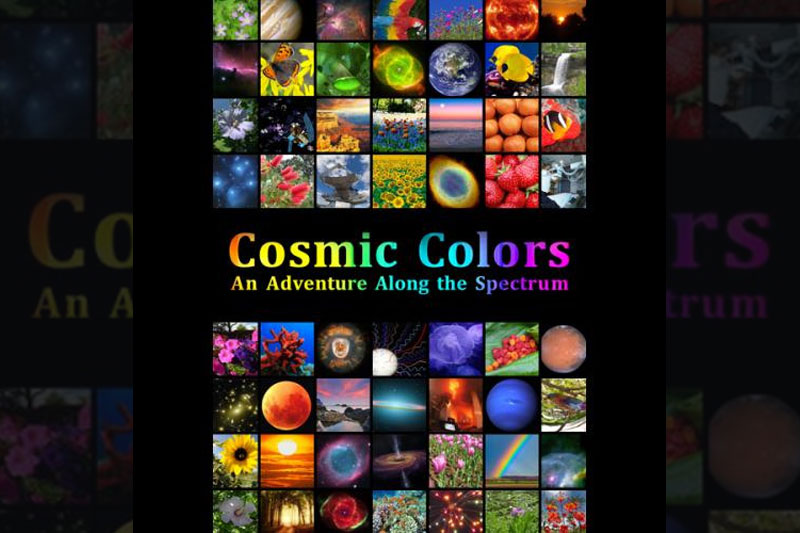
Enjoy a wondrous journey through the world of color and beyond!
Discover why the sky is blue, why Mars is red, and the reason why many things are the color that they are.
Tour the interior of a plant leaf, voyage through a human eye, then step into the invisible universe as you investigate X-rays by taking on a monstrous black hole.
Explore the world of infrared in a roaring fire, and even discover what may have been the actual color of a dinosaur. Explore the amazing rainbow of cosmic light through "Cosmic Colors."
Target audience: Ages 5 to adult
Dark

Dark is a fulldome movie that explains and explores the nature of dark matter, the missing 80% of the mass of the universe. The search for dark matter is the most pressing astrophysical problem of our time – the solution to which will help us understand why the universe is as it is, where it came from, and how it has evolved over billions of years – the unimaginable depths of deep time, of which a human life is but a flickering instant.
Target audience: Ages 9 to adult
The Dark Matter Mystery

What keeps galaxies together? What are the building blocks of the Universe? What makes the Universe look the way it looks today? Researchers all around the world try to answer these questions. We know today that approximately a quarter of the Universe is filled with a mysterious glue: Dark Matter. We know that it is out there. But we have no idea what it is made out of.
This planetarium show takes you on the biggest quest of contemporary astrophysics. You will see why we know that Dark Matter exists, and how this search is one of the most challenging and exciting searches science has to offer. Join the scientists on their hunt for Dark Matter with experiments in space and deep underground. Will they be able to solve the Dark Matter Mystery?
Target Audience: age 8 to adult
Dawn of the Space Age
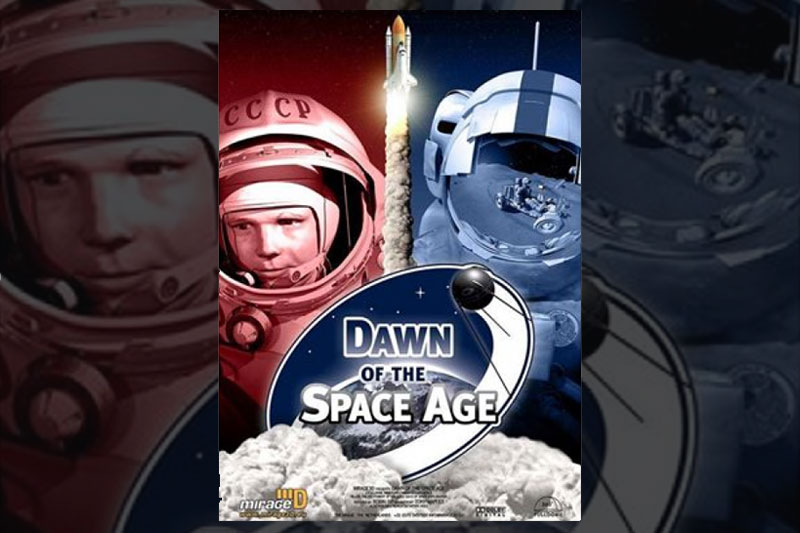
Relive the excitement of space exploration's early days, from the launch of the first artificial satellite Sputnik to the magnificent lunar landings and privately operated space flights. Be immersed and overwhelmed with this most accurate historic reconstruction of man's first steps in space.
Target audience: Ages 9 to adult
Distant Worlds - Alien Life?

The night sky – a view of infinity. Does alien life exist out there? Are such aliens perhaps traveling through space, and visiting earth? Many people believe in UFOs: visitors from space. But such extraordinary claims demand clear evidence. Evidence for alien visitors, however, does not exist. Join us as we search deep space for extraterrestrial life.
Special note: This show is 52 minutes long - but worth it!
Target audience: age 8 to adult
Earth, Moon, and Sun
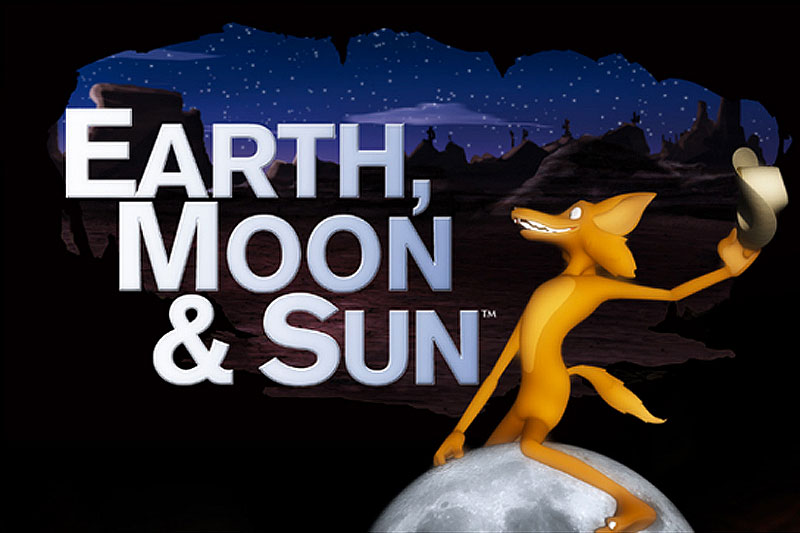
This planetarium show explores the relationship between the Earth, Moon and Sun with the help of Coyote, an amusing character adapted from Native American oral traditions who has many misconceptions about our home planet and its most familiar neighbors.
His confusion about the universe makes viewers think about how the Earth, Moon and Sun work together as a system. Native American stories are used throughout the show to help distinguish between myths and science.
Target audience: Ages 0 to 10 years
Flight Adventures

In this multimedia planetarium show about the science of aeronautics, you will discover the science of flight through the eyes of a young girl and her grandfather as they explore how birds, kites, planes, and models fly, and imagine where flight might take them. Learn about famous inventors and aviators of the past and the pioneers who first revealed the four forces of flight and how NASA is discovering new and safer ways to travel with the help of future engineers and aviators - like you!
Target audience: Ages 8 to adult
Fractal Explorations

This show examines what fractals are, how they are made (algebraically and geometrically), and where they are found in nature. Filled with engaging graphics, "Fractal Explorations" is a feast for the eyes, as well as an exercise for the mind.
Target audience: Ages 0 to 10 years
From Earth to the Universe

The night sky, both beautiful and mysterious, has been the subject of campfire stories, ancient myths and awe for as long as there have been people. A desire to comprehend the Universe may well be humanity’s oldest shared intellectual experience. Yet only recently have we truly begun to grasp our place in the vast cosmos. To learn about this journey of celestial discovery, from the theories of the ancient Greek astronomers to today’s grandest telescopes, we invite you to experience "From Earth to the Universe."
Target audience: age 6 to adult
The Hot and Energetic Universe

The Hot and Energetic Universe presents the fascinating world of high energy astrophysics. High energy astrophysics plays a key role in understanding the universe, as these radiations reveal the processes in the hot and violent universe. High energy astrophysics probes hot gas in clusters of galaxies, which are the most massive objects in the universe. It also probes hot gas accreting around supermassive black holes in the centers of galaxies. Finally, high energy radiation provides important information about our own galaxy, neutron stars, supernova remnants and stars like our Sun which emit copious amounts of high-energy radiation. Come and learn about your hot and energetic universe!
Target audience: age 8 to adult
IBEX: Search for the Edge of the Solar System

Investigate the boundary between our Solar System and the rest of our galaxy in "IBEX: Search for the Edge of the Solar System." Follow the creation of NASA's Interstellar Boundary Explorer (IBEX), its mission, and how it works.
The Lincoln Almanac Trial

This show details how Abraham Lincoln's most famous and controversial case as a trial lawyer was based upon the position of the moon in the night sky and an almanac that Lincoln produced for the trial. Was Lincoln's almanac factual, or was honest Abe not so honest and fabricated his almanac? We will lay this question to rest and along the way learn all kinds of great information about the moon and its orbital characteristics.
Target audience: Ages 10 to adult
Losing the Dark

Starry skies are a vanishing treasure because light pollution is washing away our view of the cosmos! Losing the Dark is a "public service announcement" planetarium show, as it introduces and illustrates some of the issues regarding light pollution and suggests three simple actions people can take to help mitigate it.
Mini-Show Extravaganza!

This is a collection of our fulldome "shorts," including "Citizen Sky," "Losing the Dark," "Solar Quest," and "Monsters of the Cosmos!"
Target audience: Ages 8 to 10
Oasis in Space
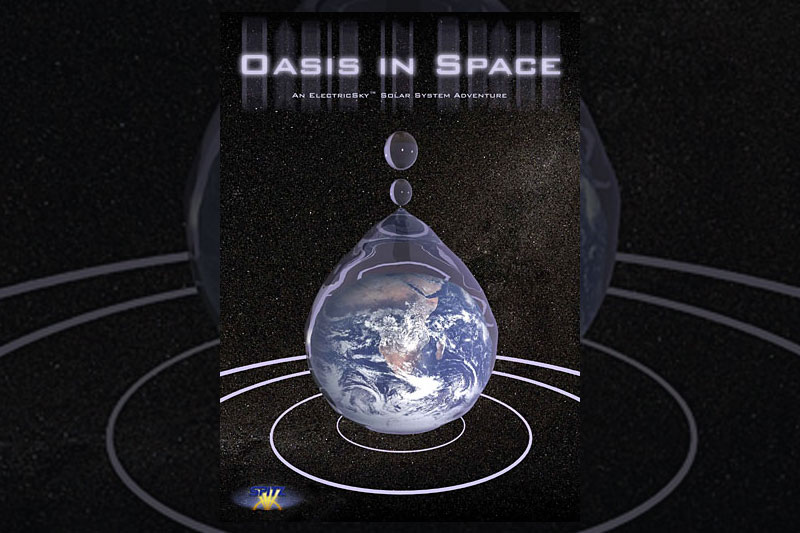
Oasis in Space transports you on a startling and beautiful voyage through our universe, galaxy and solar system in search of liquid water, a key ingredient for life on Earth.
One World, One Sky: Big Bird's Adventure
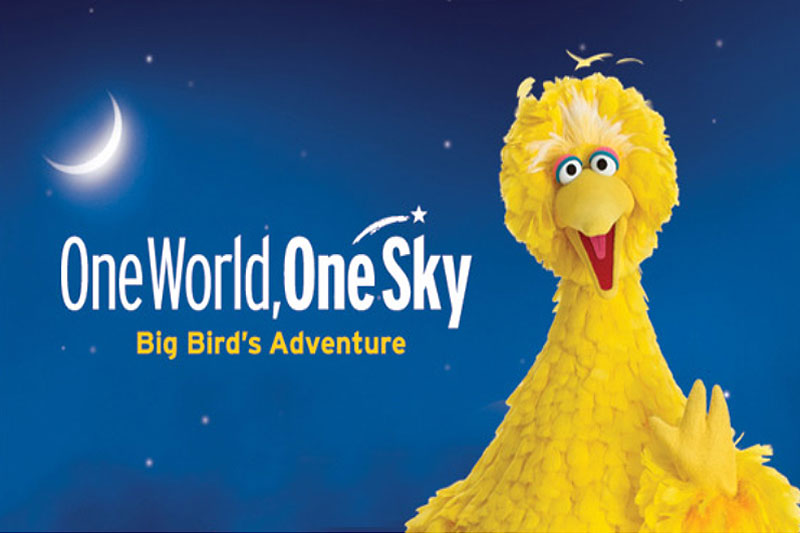
One World, One Sky is a brilliant spectacle of light and color that follows Sesame Street's Big Bird and Elmo as they explore the night sky with Hu Hu Zhu, a new friend from China. Together, they take an imaginary trip from Sesame Street to the moon, where they discover how different it is from Earth. This cross-cultural adventure opens children's eyes to the sky, helping them see how people all over the world are connected.
Target audience: Ages 0 to 3
Origins of Life

Origins of Life deals with some of the most profound questions of life science: the origins of life and human search of life beyond Earth. The show deals with the pre-biotic chemistry in the Universe, the formation of stars, solar systems and the first life on Earth. Furthermore, "Origins of Life" covers the great extinctions and our search for life beyond planet Earth.
Target audience: Ages 9 to adult
Rusty Rocket's Last Blast
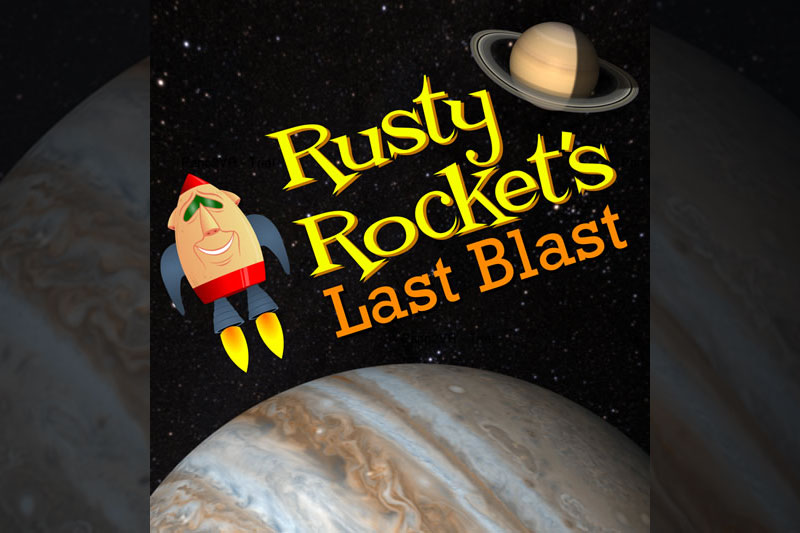
All rocket rookies report to class! Lift off with Rusty Rocket and learn rocket basics, relive great moments in space exploration, and discover how far it really is to the moon and planets. After decades of teaching rocket rookies the basics of rocket physics, Rusty Rocket has announced that this will be his last blast, and he already has plans for how he will spend his free time. Meanwhile, Rusty has one final mission to command: an introductory tour of the solar system for a class of rocket rookies that focuses on the wide variety of planetary environments. Rusty really emphasizes the immense distances between the planets.
Target audience: Ages 0 to 10
Season of Light

Season of Light traces the history and development of many of the world's most endearing holiday customs, all of which involve lighting up the winter season — from the burning Yule log, sparkling Christmas tree lights and candles in windows, to the lighting of luminarias in the American Southwest and the traditional ritual of the Hanukkah Menorah. The show also recounts the historical religious and cultural rituals practiced during the time of winter solstice — not only Christian and Jewish, but also Celtic, Nordic, Roman, Irish, Mexican and Hopi. It also takes a look at some of our more light-hearted seasonal traditions: from gift-giving and kissing under the mistletoe, to songs about lords a-leaping and ladies dancing, and the custom of decking the halls with greenery and candles. St. Nicholas, Sinterklaas, Kris Kringle, Father Christmas, and Santa Claus all drop by as well. Season of Light is visually rich, culturally inclusive, musically satisfying, and soothing as a warm drink on a cold winter's night.
The Sistine Chapel

Finding a moment to reflect on Michelangelo’s “Book of Genesis” isn’t easy in the noisy, tourist-filled Sistine Chapel. Along with working your way through the masses filling every corner of the Vatican’s popular destination, a security official yells “no photos!” every few seconds in an effort to preserve the 16th century masterpiece. So instead, come to the planetarium where you can can gaze at the same artwork!
After a short history of the chapel, enjoy a detailed explanation of all of Michelangelo's works, including the Creation of Adam, the stories of Noah and Moses, and the Last Judgement.
Target audience: Ages 5 to adult
Space Opera

A virtual space journey that begins with the discovery of an alien spaceship beneath the Earth. This spaceship then takes off from the Earth and visits the entire solar system and beyond as the spaceship narrates the journey and provides information for each galactic stop. "Space Opera" is an artistic, philosophic, musical, scientific and cinematic experience all at the same time - indeed a unique and wonderful experience.
Stars
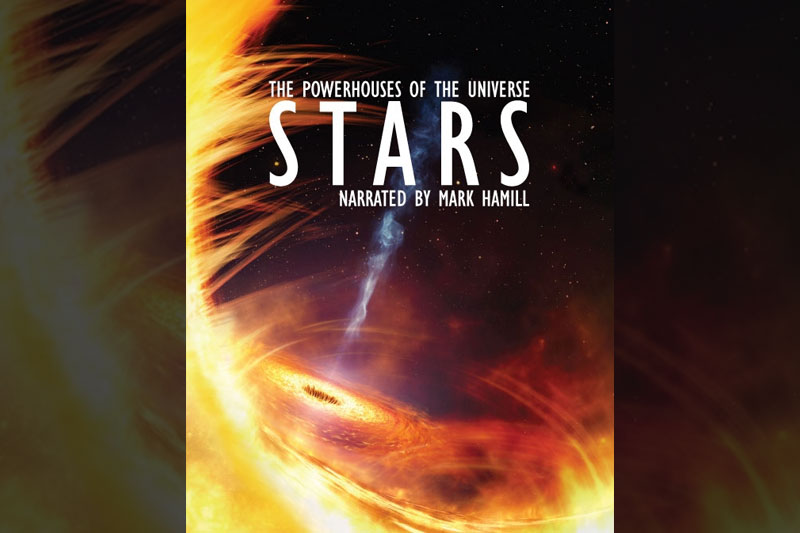
Every star has a story. Journey to the farthest reaches of our galaxy and experience both the awesome beauty and destructive power of stars. Stars focuses on the lives of the stars, how they are born, how they die, and how human understanding of the stars has changed over time. From Native Americans to Newton, from the electromagnetic spectrum to Einstein, audiences will explore nebulae, star clusters, pulsars, black holes, and more.
Target audience: Ages 6 to adult
Sunstruck

Travel back to the beginning of time and experience the birth of the Sun. Discover how it came to support life, how it threatens life as we know it, and how its energy will one day fade away!
Target Audience: age 6 to adult
Two Small Pieces of Glass
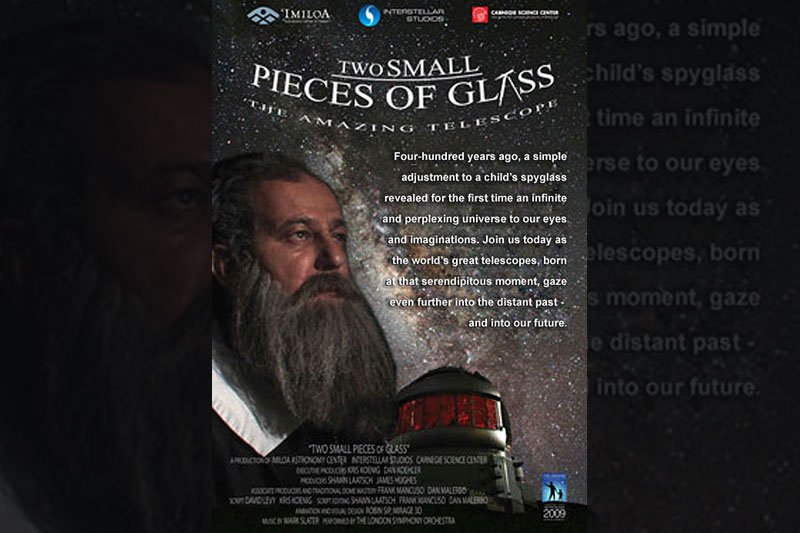
Two Small Pieces of Glass traces the history of the telescope from Galileo's modifications to a child's spyglass - using two small pieces of glass - to the launch of NASA's Hubble Space Telescope and the future of astronomy. Explore the wonder and discovery made by astronomers throughout the last 400 years. While looking through the astronomer's telescope, explore the Galilean Moons, Saturn's rings, and spiral structure of galaxies, and learn about the discoveries of Galileo, Huygens, Newton, Hubble, and many others.
The Zula Patrol: Under the Weather
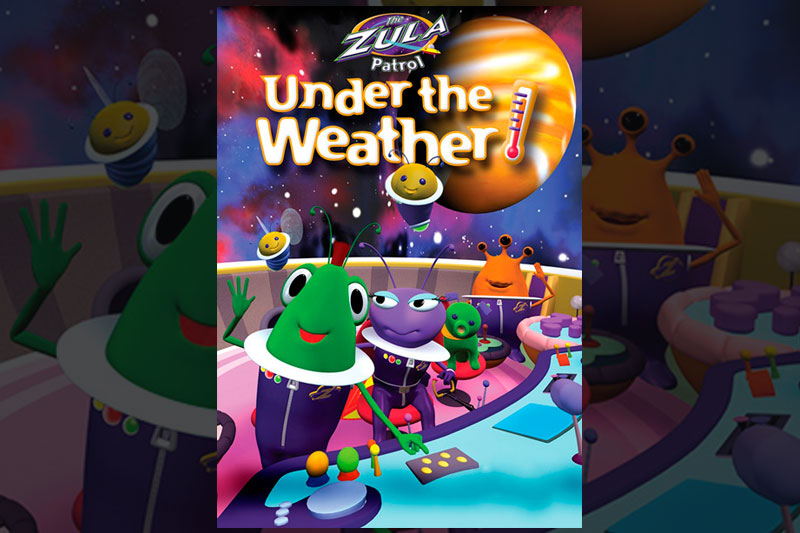
From the far reaches of outer space, comes the Zula Patrol! The stalwart heroes of the Zula Patrol are on an expedition collecting samples of weather for scientist Multo's research. When the Zula gang inadvertently hurts their loyal pet Gorga's feelings, he decides to leave Zula and find another planet to live on. Villain Dark Truder then tricks Gorga into helping with his latest nefarious scheme to rule the universe. The Zula Patrolers find out and go after him - in the process learning all about weather, both terrestrial and interplanetary.
Target audience: Age 0 to 10
